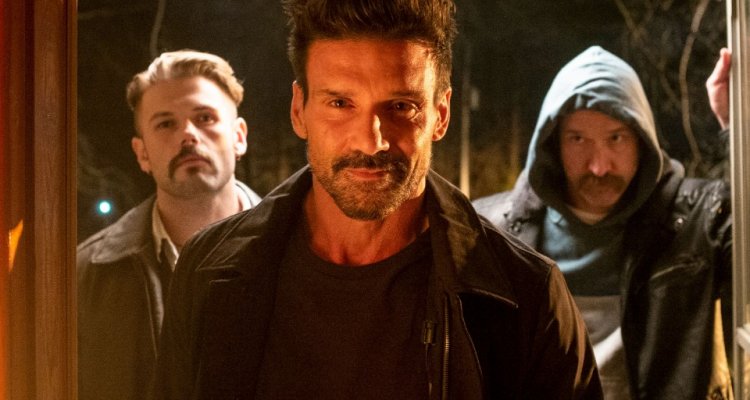Aaron Harvey’s visually interesting, but ultimately lethargic, Western-noir “Into the Ashes” attempts to synthesize brooding character study with a violent action film, but instead, ends up falling short of being a quality example of either. Favoring large sections of silence before violent outbursts, Harvey’s latest directorial effort has style but is bogged down by thin characterization and a by-the-numbers plot that the film never manages to transcend.
“Into the Ashes” follows reformed criminal Nick (Luke Grimes), who is trying to live a simple life with a job at an upholstery store and a loving wife (Marguerite Moreau). In a parallel narrative, Frank Grillo’s Sloan is a recently released convict who immediately begins his hunt for Nick, who betrayed him years earlier. While Nick is away with his friend Sal (an underutilized James Badge Dale) hunting, Sloan breaks into his house and murders his wife, leading to Nick’s ultimate quest for revenge.
With such a basic plot, the success of “Into the Ashes” relies on conveying mood and style. When Harvey expands his formal scope, including an expansive opening tracking shot and a notable section that moves backward and forward in time later in the film, first to show the aftermath of a shoot-out before jumping back to actually show how all these dead bodies came to be, there is a glimpse of what the film could’ve been, if only “Into the Ashes” was more playful and less brooding in its treatment of Western and noir tropes.
Unfortunately, the film is much more concerned in playing out masculine fantasies of revenge. Harvey and cinematographer John W. Rutland favor a washed-out, grayish aesthetic, predominantly placing the film at night. While stylish, too often the film’s grayish palette infects the plot and characters, focusing too much on machismo brooding instead of character or plot development. Further, every female character (all two of them, really) is either portrayed as a nagging wife or, in the case of Moreau, promptly killed off for, y’know, plot mechanics. The fact Nick barely reacts to the murder of his wife demonstrates how thin-characterization overtakes rational development.
Grillo, who also acts as a producer with his “The Grey” director Joe Carnahan, is unsurprisingly the stand-out of the film, even considering he is asked to play the type of menacing character that he has perfected recently. Sloan may be one-note, but Grillo makes the most out his character’s psychopathic tendencies. The fact that Sloan only exists as a catalyst for Nick’s revenge, and disappears for large portions of the already short running time, is a disservice to the film’s standout feature.
When the film escapes from its genre confines and attempts something new, such as it’s third-act non-linear structuring, it teases the possibility that “Into the Ashes” could have been a better film if only Harvey was less interested in making a by-the-numbers revenge exercise. All of this is not to suggest that “Into the Ashes” is by any means a terrible film, but more so, that it instead fails to leave a lasting impression. [C]

